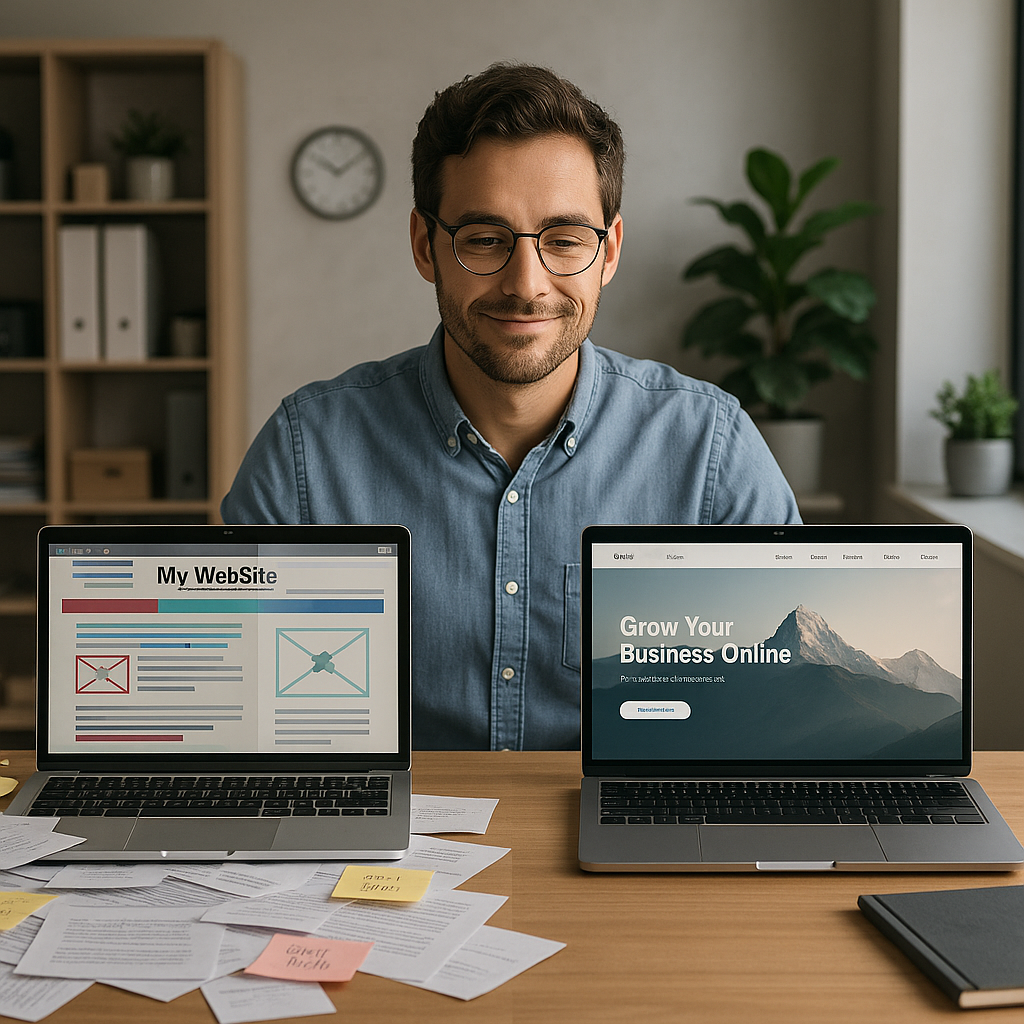Accessible Web Design: Make Your Small Business Site Inclusive
Making Your Small Business Website Accessible: A Guide to Inclusive Design
In today's digital marketplace, your website isn't just a virtual storefront—it's the gateway to connecting with countless potential customers. Yet, many small business owners overlook a crucial aspect that could be limiting their reach: web accessibility. While the concept might sound technical, creating an inclusive website isn't rocket science. Let's dive into why accessibility matters and how you can make your small business website welcoming to everyone.
The Hidden Opportunity in Inclusive Design
Did you know that over one billion people worldwide live with some form of disability? That's a massive audience that might struggle to interact with your website right now. Imagine turning away that many potential customers from your physical store—unthinkable, right? Yet that's exactly what happens when websites aren't accessible to everyone.
But here's the kicker: making your website accessible isn't just about doing the right thing (though that's incredibly important). It's about smart business. When you design with accessibility in mind, you're not just opening doors for people with disabilities—you're creating a better experience for everyone who visits your site.
The Business Case for Accessibility
Picture this: Sarah runs a local artisanal soap shop. After making her website accessible, she noticed something unexpected. Not only could more people shop on her site, but her search engine rankings improved dramatically. Why? Because many accessibility features align perfectly with SEO best practices. Talk about a win-win!
Moreover, accessible websites often lead to:
- Higher conversion rates
- Broader market reach
- Enhanced brand reputation
- Better legal compliance
- Improved customer satisfaction
Breaking Down the Basics: Simple Steps to Website Accessibility
Let's cut through the technical jargon and focus on practical steps you can take today to make your website more inclusive.
- Make Your Images Talk Those beautiful product photos on your site? They're invisible to someone using a screen reader unless you add alt text. Think of alt text as a verbal description of your image. Instead of leaving it blank or writing "image1.jpg," describe what's actually in the picture. For instance: "Handcrafted lavender soap bar with dried flowers on top" tells a much better story than "soap picture."
- Color Contrast: More Than Just Pretty Palettes While that light gray text on your white background might look sleek and modern, it could be a nightmare for some visitors to read. The solution? Create strong contrast between your text and background colors. Black text on a white background might seem basic, but it works for a reason—everyone can read it!
- Links That Make Sense Ever seen a link that just says "click here" or "read more"? These vague instructions are particularly frustrating for people using screen readers. Instead, make your links descriptive. Replace "click here" with "view our summer collection" or "download our price list." Your visitors will thank you—and so will your SEO!
- Video Content That Everyone Can Enjoy Those engaging product demonstrations or behind-the-scenes videos you've created? Add captions! Not only does this help people who are deaf or hard of hearing, but it's also great for folks watching without sound (which, let's face it, is most of us while scrolling social media at work).
- Keyboard-Friendly Navigation Not everyone uses a mouse to navigate websites. Some people rely entirely on their keyboard, using the Tab key to move between elements. Try this yourself: Can you navigate your entire website using just your keyboard? If not, it's time for some updates.
Real-World Impact: Small Changes, Big Results
Consider Maria's story: After implementing these accessibility changes on her boutique's website, she received an email from a customer with visual impairments who was finally able to shop independently online. The customer became a regular, referring friends and family to Maria's store. One simple update led to a loyal customer base she hadn't even considered before.
Tools to Help You Get Started
Don't feel overwhelmed! There are plenty of free tools available to help you assess and improve your website's accessibility:
- WAVE (Web Accessibility Evaluation Tool)
- Google Lighthouse
- Color Contrast Analyzers
- Screen Reader Testing Tools
The Road to Inclusive Design
Remember, perfect accessibility doesn't happen overnight. Start with small changes and build from there. Each improvement makes your website more welcoming to more people—and isn't that what business is all about?
Your website should be as welcoming as your physical store. By implementing these accessibility features, you're not just following best practices or meeting legal requirements—you're showing every potential customer that they matter to your business.
Take the first step today. Pick one aspect of accessibility to improve on your website. Maybe start with alt text for your images or checking your color contrast. Small changes add up to make a big difference in creating an inclusive online presence for your small business.
After all, in today's digital world, accessibility isn't just an option—it's an opportunity to grow your business while making the web a better place for everyone.





